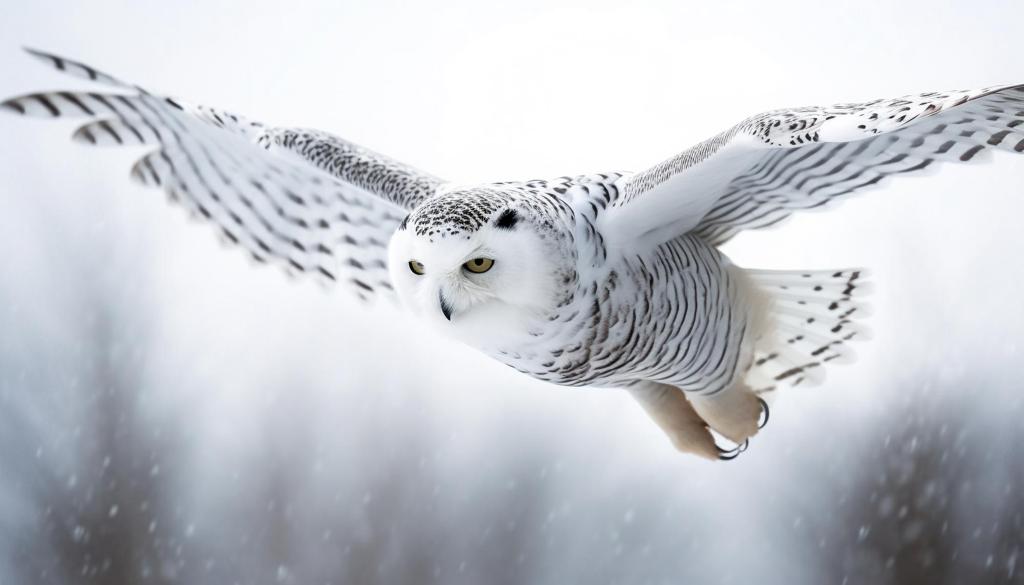
Snow Owl : "The Majestic Bird of the Arctic"
Introduction :
The Snow Owl, scientifically known as Bubo scandiacus, is a magnificent bird that inhabits the Arctic regions of North America, Europe, and Asia. Also referred to as the Arctic Owl or the Ghost Owl, this species has captivated the imagination of bird enthusiasts and nature lovers alike. In this article, we will explore the unique characteristics, habitat, behavior, and conservation status of the Snow Owl.
Physical Characteristics :
Snow Owls are easily recognizable due to their distinctive appearance. They have a large wingspan, measuring up to 1.5 meters (5 feet), making them one of the largest owl species in the world. These owls have striking white plumage, which helps them blend seamlessly into their snowy surroundings, providing an effective camouflage from predators and prey. Additionally, Snow Owls possess bright yellow eyes, a sharp hooked beak, and dense feathering on their legs to protect against the extreme cold temperatures in their habitat.
Habitat and Distribution :
Snow Owls are well adapted to survive in the harsh Arctic tundra, where temperatures can plummet to -50°C (-58°F). They are found in regions such as Alaska, Canada, Greenland, Scandinavia, and Russia. These birds prefer open habitats like the treeless expanses of the Arctic, including coastal areas, tundra, and polar deserts. They have also been known to venture into more southern regions during periods of food scarcity.
Behavior and Diet :
Snow Owls are primarily diurnal hunters, unlike most owl species that are nocturnal. They have excellent eyesight, enabling them to spot prey from great distances. Their diet mainly consists of small mammals, such as lemmings, voles, hares, and rodents, which are abundant in their habitat. These owls are powerful and agile hunters, capable of swooping down silently from the sky to catch their prey.
Breeding and Conservation :
Snow Owls are monogamous and form long-term pair bonds. Breeding occurs during the summer months, and the female lays a clutch of 3 to 11 eggs. The incubation period lasts around 32 to 34 days, during which time both parents share the responsibility of protecting and incubating the eggs. Once hatched, the young owls remain in the nest for approximately six weeks before they fledge.
While the Snow Owl population is not currently classified as endangered, their numbers have been declining in recent years due to various factors. Climate change and habitat loss are significant threats to this species, as changes in the Arctic ecosystem can disrupt their food sources and nesting sites. Furthermore, illegal hunting and disturbance from human activities also pose risks to their survival. Conservation efforts are crucial to ensure the long-term viability of these magnificent birds.
Conclusion :
The Snow Owl, with its majestic appearance and unique adaptations, is a symbol of the Arctic wilderness. Its ability to thrive in extreme conditions and its remarkable hunting skills make it an intriguing bird to study and admire. However, the conservation of the Snow Owl and its fragile habitat is of utmost importance to ensure that future generations can continue to witness the beauty of this awe-inspiring species in the wild.



